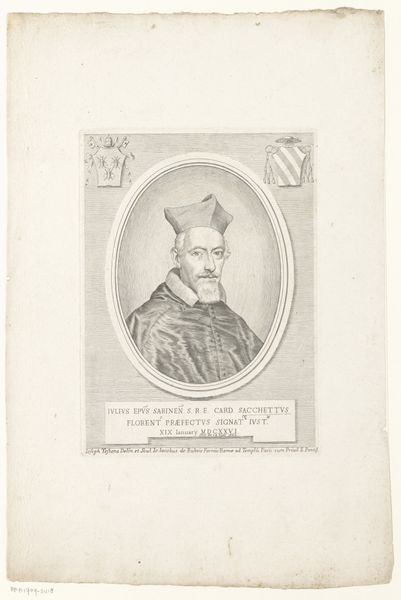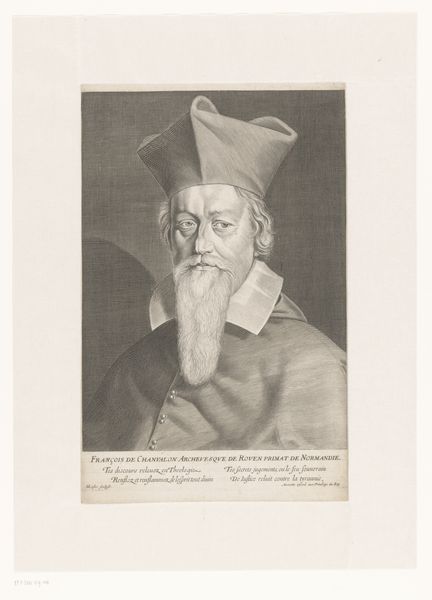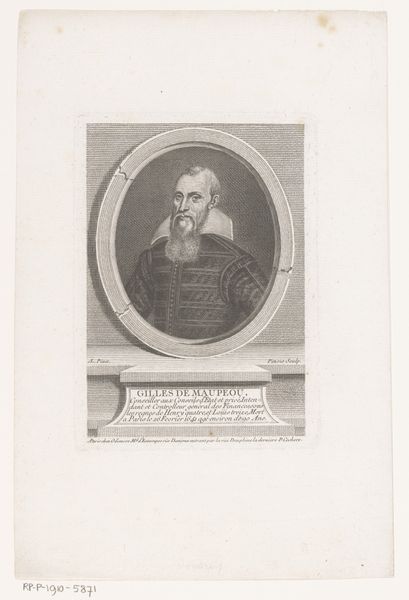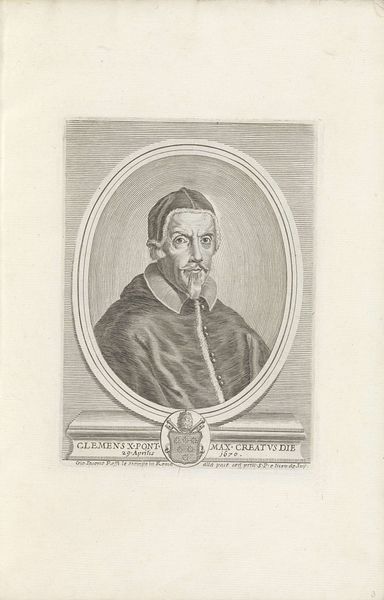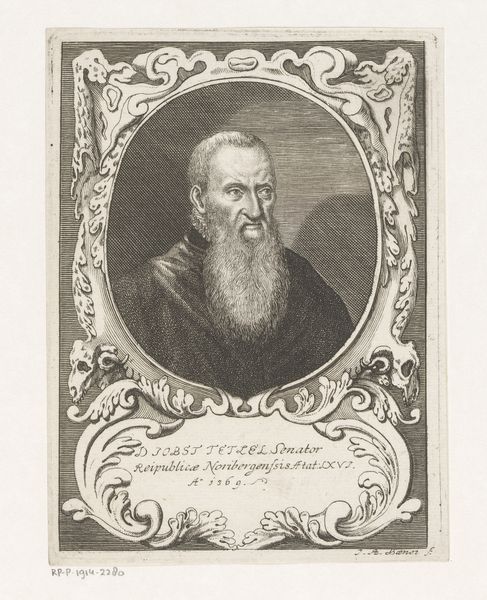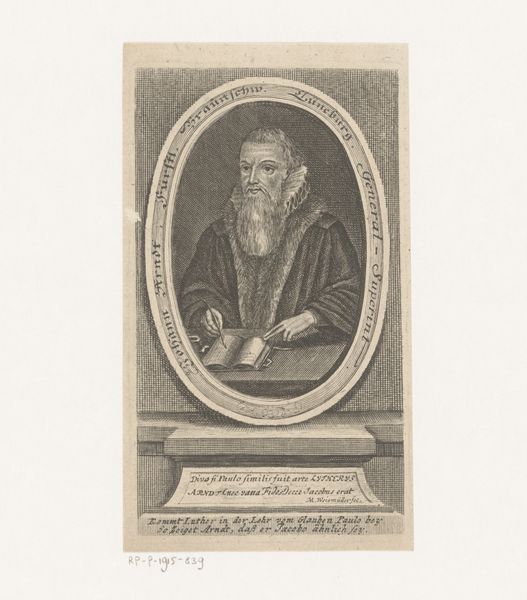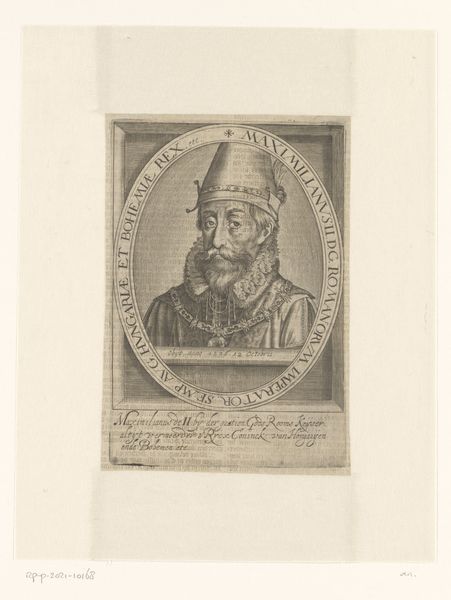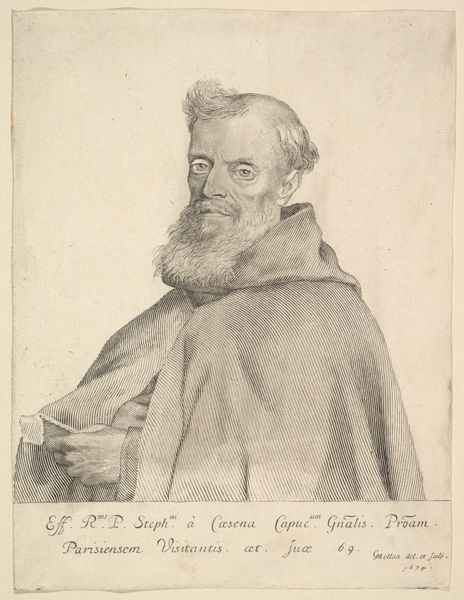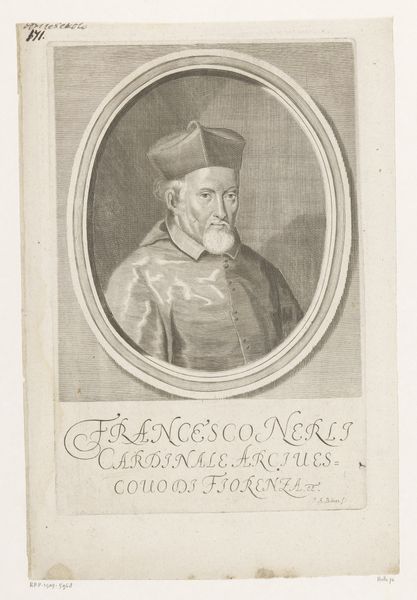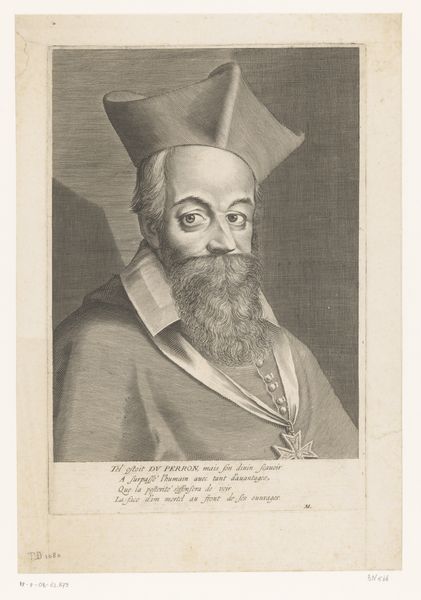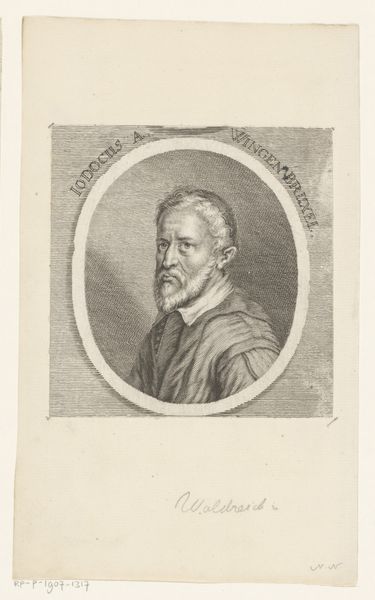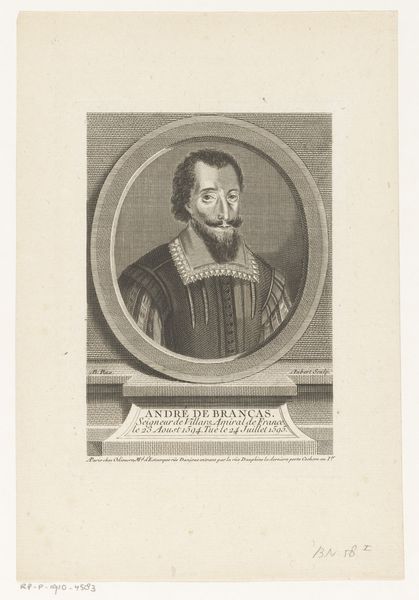
drawing, paper, engraving
#
portrait
#
drawing
#
baroque
#
paper
#
line
#
academic-art
#
engraving
Dimensions: height 163 mm, width 124 mm
Copyright: Rijks Museum: Open Domain
Editor: Here we have a rather striking portrait from sometime between 1674 and 1765, by Claude Mellan: *Portret van Stefano da Cesena op 69-jarige leeftijd*. It's an engraving, and what grabs me is the sheer number of lines used to create the shading – it looks incredibly laborious! What strikes you when you look at it? Curator: The materiality speaks volumes. The very act of engraving – the labor, the pressure of the tool against the copper plate, the ink painstakingly applied and transferred to paper – it’s all integral to understanding this piece. Consider the social context. Who commissioned this work, and why? This isn’t just a depiction of an individual; it's a representation of power and status mediated through a highly skilled, physically demanding process. Editor: So, it's not just about *who* Stefano da Cesena was, but how Mellan's artistic *process* elevated him? Curator: Exactly! Mellan wasn’t just replicating an image. He was engaging in a dialogue with the means of production itself. Think about the time and resources needed to create such a detailed engraving. This portrait becomes a commodity, a testament to both the sitter's importance and the engraver's mastery, and their access to materials. It asks, “Who has access to this kind of labor, this kind of artistry?" Editor: I see. It’s less about the surface-level image and more about the layers of production behind it. I hadn't considered the value assigned to that level of skilled handiwork at the time. Thanks for pointing that out! Curator: And thanks to you – thinking about the process involved really transforms the viewing experience, doesn’t it?
Comments
No comments
Be the first to comment and join the conversation on the ultimate creative platform.
